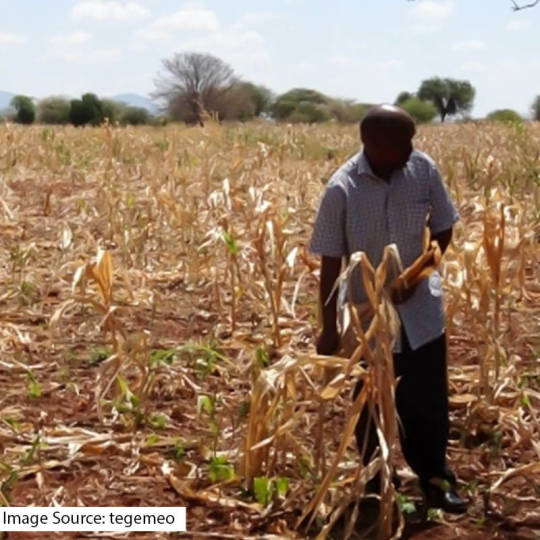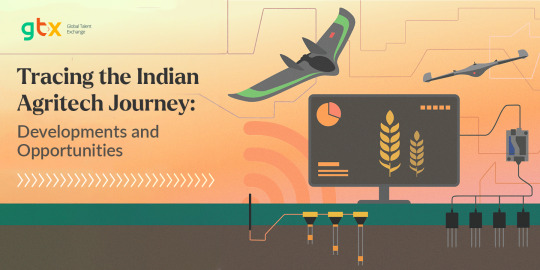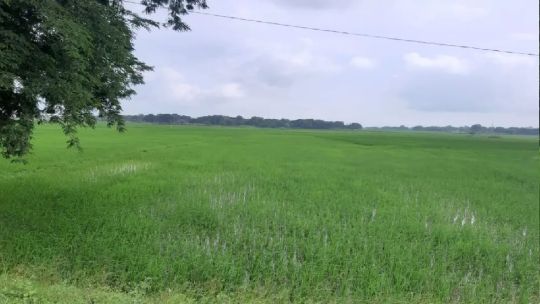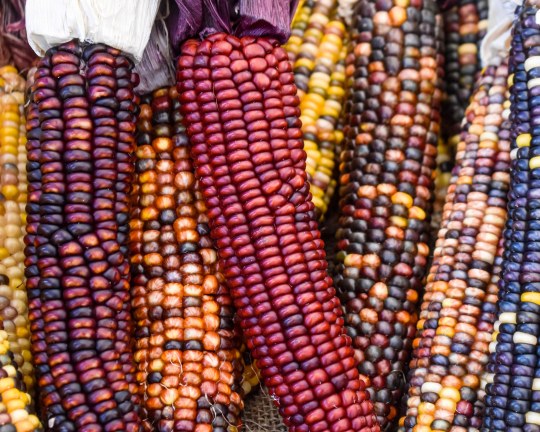#indian farmers
Text


Financial Sustainability in Agricultural Grading
Welcome back to our vlog series on the challenges faced by farmers in manual sorting and grading of machines in India, presented by Segritech! In today's episode, we're shifting our focus to the critical issue of financial sustainability and the challenges farmers encounter in sustaining their livelihoods through agricultural grading. Join us as we delve into the financial complexities of agricultural grading and the hurdles farmers face in achieving economic viability.
Financial sustainability is a pressing concern for farmers engaged in agricultural grading, with several challenges impacting their ability to maintain profitability. One of the key challenges is the high initial investment required for grading machinery and technology. For small-scale farmers, the cost of acquiring and maintaining grading equipment can be prohibitive, limiting their access to modern grading solutions and hindering their competitiveness in the market.
Moreover, operational costs associated with manual labor, maintenance, and infrastructure further strain farmers' finance. Labor-intensive grading processes contribute to high labor costs, especially during peak harvesting seasons when labor demand is high. Additionally, the lack of access to affordable maintenance services and spare parts for grading equipment adds to operational expenses, impacting farmers' bottom line.
Furthermore, pricing dynamics in agricultural markets present challenges for farmers in achieving fair compensation for their graded produce. Fluctuations in market prices, coupled with the dominance of middlemen and lack of market transparency, often result in farmers receiving lower prices than the actual value of their produce. This disparity in pricing undermines farmers' financial sustainability and hampers their ability to invest in improving grading practices.
As we've explored in today's episode, financial sustainability is a critical challenge for farmers engaged in agricultural grading in India. From high initial investment costs to ongoing operational expenses and pricing dynamics in agricultural markets, navigating these financial hurdles requires innovative solutions that empower farmers and ensure economic viability. Stay tuned as we continue to delve into this important topic in our upcoming episodes!
0 notes
Text
0 notes
Text
Why Farmers Roar: Breaking Down the Delhi Chalo Protest 2024😱
In the heart of India, where the fields stretch endlessly, a powerful roar echoes across the land. The Delhi Chalo Protest of 2024 has become a rallying cry, echoing the concerns and aspirations of the farmers who till the soil. As we delve into the depths of this movement, it is crucial to understand the factors that have led to this powerful expression of dissent.
The Root Cause :- The root…

View On WordPress
#Delhi Chalo#EconomicStruggles#Farmers Protest#Indian Farmers#Protest 2024#RuralSolidarity#Social Justice#Sporty Vaibhav
0 notes
Text
जीएम सरसों पर प्रतिबंध से भारतीय किसानों को नुकसान सुप्रीम कोर्ट को विचारधारा के ऊपर विज्ञान को चुनना चाहिए | Indian farmers suffer from the GM mustard ban. The Supreme Court must favour science over dogma;

Source: theleaflet.in
पिछले दो दशकों से जीएम तकनीक पर पूर्ण प्रतिबंध लगाने पर जोर
सुप्रीम कोर्ट ने जीएम सरसों की रिहाई की मांग वाली अर्जी को स्वीकार करते हुए किसान संघ शेतकरी संगठन से पूछा, 'आप इतने साल कहां थे?'
जैसा कि सुप्रीम कोर्ट एक ऐसे मामले पर विचार-विमर्श कर रहा है जो भारत में आनुवंशिक रूप से संशोधित सरसों के भाग्य का निर्धारण कर सकता है, एक किसान निकाय भारत की शीर्ष अदालत में अपनी आवाज सुनने का प्रयास कर रहा है।
महाराष्ट्र स्थित किसान संघ, शेतकरी संगठन, सामाजिक रूप से संशोधित (जीएम) सरसों पर प्रतिबंध लगाने की मांग करने वाली कार्यकर्ता अरुणा रोड्रिग्स द्वारा दायर याचिका का विरोध कर रहा है। बीटी कपास के साथ अपने अनुभव के आधार पर, किसानों का तर्क है कि जीएम सरसों में खाद्य उत्पादन बढ़ाने और उनकी आजीविका में सुधार करने की क्षमता है।
भले ही उनके आवेदन को 17 नवंबर 2022 को रिकॉर्ड में ले लिया गया, लेकिन यह निराशाजनक है कि जिन किसानों की खेल में सबसे अधिक चमड़ी है, उन्हें अब तक सुप्रीम कोर्ट द्वारा नहीं सुना गया है।
जीएम सरसों की रिहाई की वकालत करने वाले आवेदन को स्वीकार करते हुए पीठ ने पूछा, 'आप इतने सालों में कहां थे?' यह सवाल जीएम की रिहाई के लिए और उसके खिलाफ लड़ने वालों के बीच संसाधनों और शक्ति में असमानता को ध्यान में रखने में विफल रहता है। सरसों।
कार्यकर्ता, अदालत का दरवाजा खटखटाने और अपना मामला बनाने के साधनों के साथ, पिछले दो दशकों से जीएम तकनीक पर पूर्ण प्रतिबंध लगाने पर जोर दे रहे हैं। इस बीच, जिन किसानों को बहुत अधिक लाभ होने वाला है, वे रोजी-रोटी कमाने के दैनिक संघर्ष में व्यस्त हैं। क्या प्रौद्योगिकी के उपयोग के माध्यम से एक बेहतर जीवन चुनने का किसान का अधिकार संसाधनों की कमी और कानूनी रास्ते तक पहुंच से बाधित होना चाहिए?
जीएम फसलों पर प्रतिबंध
पिछले 18 वर्षों से जीएम फसलों का व्यावसायिक उपयोग अधर में लटका हुआ है। 2002 में व्यावसायिक खेती के लिए पहली बार पेश किए जाने के बाद से ही ये फसलें भारत में बहस का एक विवादास्पद विषय रही हैं। अरुणा रोड्रिग्स और अन्य के साथ एक गैर सरकारी संगठन जीन कैंपेन ने 2004 में जीएम जीवों के उपयोग को चुनौती देते हुए एक जनहित याचिका दायर की थी। जीएम सरसों इनका ताजा शिकार है।
भारतीय वैज्ञानिकों द्वारा विकसित, जीएम सरसों में कृषि में क्रांति लाने और किसानों की आजीविका में सुधार करने की क्षमता है। हालांकि, कार्यकर्ताओं ने दावा किया है कि यह पर्यावरण और मानव स्वास्थ्य के लिए खतरा है। दूसरी ओर, किसानों का तर्क है कि प्रतिबंध कृषिविदों के लिए एक बड़ा झटका है और उन्हें अन्य देशों के किसानों की तुलना में नुकसान में डाल देगा जो पहले से ही जीएम तकनीक का उपयोग कर रहे हैं।
आजीविका में सुधार के अलावा, किसानों का मानना है कि जीएम तकनीक उन्हें बदलती जलवायु परिस्थितियों के अनुकूल बनाने, टिकाऊ कृषि को बढ़ावा देने और खाद्य सुरक्षा बढ़ाने में मदद कर सकती है। संगठन ने अपने आवेदन में शीर्ष अदालत से किसानों और कृषि उद्योग के लिए जीएम सरसों के लाभों पर विचार करने का आग्रह किया है। इस तरह की तकनीकों पर प्रतिबंध किसानों को और नुकसान पहुंचाएगा, खासकर भारत के शुष्क क्षेत्रों में, जहां पारंपरिक खेती के तरीके अपर्याप्त साबित हुए हैं। संगठन ने इस बात पर जोर दिया कि याचिकाकर्ताओं के अप्रमाणित और अंधविश्वासी विश्वासों के कारण किसानों को प्रौद्योगिकी का उपयोग करने से नहीं रोका जाना चाहिए। जीएम फसलें पैदावार बढ़ा सकती हैं और उत्पादन लागत कम कर सकती हैं, जिससे अधिक मुनाफा हो सकता है।......
#gm mustard#genetically#genetic genealogy#supreme court#GM mustard ban#indian farmers#indian farming#mustard farming
0 notes
Text
Challenges Faced by Indian Farmers: Kisan Diwas

Farmers are said to be the pillars of our nation. India being an agricultural country, has 54.6 per cent of the total workforce in farming (Ministry of Agriculture). There won’t be food at home if you or your breadwinner quits working. There won’t be any food on the planet, though, if the farmer quits farming the ground! The significance of a farmer is obvious from this; it has increased as a result of the population growth and decline in farmland availability.
India is a significant agricultural powerhouse, with farmers and all other related labour serving as its foundation. India is a significant agricultural powerhouse, with farmers and all other related labour serving as its foundation. They provide us with the most important source of energy to humans, food. They play the initial and vital role in the whole process of growing our food and helping it reach us. Economically speaking, with a GVA of Rs. 46.44 lakh crore in 2021, the agriculture sector was responsible for an 18.8 per cent share. It was 20 per cent in 2018 which dropped down by 2 per cent due to various reasons in the country. Deforestation, poor irrigation facilities, climate change and other global reasons.

To praise the contribution of farmers in the country and raise awareness about their challenges, National Farmers Day is marked in India on 23rd December every year. The date 23rd December is specially chosen to celebrate the birth anniversary of the 5th Prime Minister of India, Shri Chaudhary Charan Singh, also known as the leader of farmers. He is known for introducing multiple policies for farmers and the agricultural sector during his tenure. In addition to “Abolition of Zamindari,” “Co-operative Farming X-rayed,” “India’s Poverty and Its Solution,” “Peasant Proprietorship or Land to the Workers,” and “Prevention of Division of Holdings Below a Certain Minimum,” he also wrote several other books and pamphlets.
Despite many laws passed by the government to aid the farmers, they still lag in helping the farmers of India through their struggles of minimum income, facilities, and insufficient yield. Today, they do not face just a couple of problems, their struggles lay at various levels that need to be addressed.
Challenges Faced by Farmers in India

Irrigation
One of the most crucial phases of farming is irrigation. Although India is the second largest irrigated country in the world after China, only one-third of the cropped area is under irrigation. In a country with a tropical monsoon like India, where rainfall is unpredictable, unreliable, and variable, irrigation is the most crucial agricultural input. India won’t be able to make significant agricultural advancements unless and until more than half of the planted area is covered by reliable irrigation. For large areas, irrigation is still necessary to boost agricultural yield. Water resources can be utilized to their fullest extent and easily delivered to the locations where they are most required through interstate cooperation on water management.
2. Small and fragmented land-holdings
India has a total farmland, sown area of 141.2 million hectares out of which, 189.7 million hectares pales into insignificance when we see that it is divided into economically unviable small and scattered holdings. The average holding size was 2.28 hectares from 1970 to 1971; this fell to 1.82 hectares from 1980 to 1981; and 1.08 hectares from 2015 to 2016. Additionally, as the land holdings are continuously divided, the number of properties continues to decrease even today. The issue of smaller and fractured lands is one of the key issues faced by Indian farmers in states that are heavily populated and actively cultivated. This results in a wide gap between small, medium, and big farmers.
3. Lack of mechanization
Despite the extensive mechanization of agriculture in some areas of the nation, the majority of agricultural operations are still conducted by hand in the majority of those regions, employing traditional equipment and implements like wooden ploughs, sickles, etc. A lack of funds refrains farmers from purchasing the advanced equipment available today that can boost cultivation and save loads of time and labour hours. The saved time and hours can be put to use for many other farm-related productive activities that are necessary.
4. Scarcity of Capital
Agriculture is a major industry in India contributing a huge chunk of the GDP, and much like other industries, it needs money to function. With the advancement of agricultural technology, the importance of capital input is growing. Framers are forced to borrow capital to increase the pace of agricultural production because their capital is tied up in their lands and stocks. Money lenders, traders, and commission brokers charge high repayment rates and purchase agricultural products at ridiculously low prices, the farmers are left with no other way to go and have to choose the high charging interest rates.

5. Natural Calamities
Despite facing all of these difficulties throughout their production cycle, farmers still have to deal with a tragedy caused by nature. It can take any shape, including floods, tsunamis, cyclones, unseasonably dry spells, severe weather, and a bird or insect attack that causes crop destruction. All of the farmers’ hard work is in vain because there is a lack of policy and financial aid available in the wake of such destruction. Large areas of fertile land are vulnerable to wind and water-induced soil erosion. Global warming and climate change are the biggest natural threats to farmers. It is essential to properly treat this area and bring it back to fertility.
National Farmers Day or Kisan Diwas aims to address all these and other issues of farmers in India and take firm steps in order to provide them with adequate aid to protect and increase their yield. Let us all take this day as an opportunity to be grateful for our farmers who provide us with our food, one of the basic necessities without which we cannot survive.
0 notes
Photo

Governments and policymakers across the world are hurriedly seeking new and sustainable approaches and methods to alleviate food insecurity.
This is becoming a major concern, given that the global population as of November is a whopping 7.99 billion. It is also exigent to manage the limited resources, the imbalance in distribution and accessibility, and significantly increase agricultural output.
India’s Agritech Scenario

The global Agritech sector is poised to grow at 12.1% CAGR between 2020 to 2027, with startups in this realm raising funds to the tune of US$26.1, which amounts to a growth of 35.4% from the year 2019.
In the face of the impending crisis and given that India continues to be quintessentially an agrarian country, there is significant attention to agriculture technology or agritech. The country continues to compete with the US and China in this sector. The agricultural sector in India is a source of livelihood for more than 40% of our population and makes up about 9.9% of the country’s GDP.
However, this sector continues to be hampered by stunted productivity and growth, with the income for farmers taking a serious ‘beating’. It has become exigent, therefore, to speedily introduce sustainable reforms and modernize Indian agriculture with technology or agritech.
What is Agritech and Why is it Important?
Agritech is simply the application of technology to farming, intending to enhance efficiency and profitability. Technology enables the enhancement of agriculture through monitoring, analysing, and pre-emptive action for weather conditions, pest control, and soil, air, and temperature management. It is also used to manage irrigation, heating, and the distribution of aerosols for controlling insects.
A peek into the start-up ecosystem shows that India is home to more than 1300 start-ups in the agritech space. These new businesses use artificial intelligence (AI), machine learning (ML), the internet of things (IoT), automation, and other technologies, all geared towards pushing efficiency and productivity in this realm.
While some realms within the agricultural sector have begun to understand and use technology and modernized equipment, a large part of the farmer population continues to rely on traditional methods. Emerging Technologies & Agriculture
Emerging Technologies & Agriculture

There is no doubt that the agritech ecosystem is booming, with advancements leading to newer technologies consistently, which, in turn, are providing real-time farm data to the country’s farmers. The agritech start-ups are supporting farmers by providing guidelines on accentuating the quantity and quality of their products while keeping the cost of production low.
These are some of the ways in which emerging technologies are essaying tremendous change:
Internet of Things (IoT)
This technology helps to reduce dependence on the physical monitoring of crop fields. IoT devices assimilate and deliver exact real-time information through mobile apps or other means. IoT also assists with tasks such as soil fertility, temperature and humidity detection, tracking plants and livestock, and much more.
Robotics
Manual labour-dependent tasks such as fruit picking, harvesting, planting, transplanting, spraying, seeding, and weeding, are slowly being managed with the help of robots. This is agritech’s answer to the severe labour shortage on farms. Farmers now can manage onerous tasks by automating them through GPS-enabled self-directed or semi-autonomous tractors. Additionally, automated livestock management is being managed by robots.
Artificial Intelligence
Historically, farmers lose precious crops due to a lack of information and resources. AI helps with predictive insights on the subjects of crop output, weather conditions, price predictions, and more – supporting farmers to make informed and speedy decisions. This real-time information supports proactivity and prevents losses. Chatbots deliver tips and information to farmers. AI and Machine learning help livestock farmers to detect diseases and anomalies in cattle and plants, enabling swift corrective action. ML algorithms help make suggestions on gene selection too.
Big Data and Analytics
This technology enables the easy examination of farm data, which can then help to convert it into information that can be used to advantage. The data on crop production, area, projections, irrigation, land usage, agriculture prices, weather predictions, crop disease information, and more help lay the foundation for the next season.
Drone Technology
Drones with cameras are super-effective in cutting costs for farmers through the images they can capture in a short time, even for very large farm expanses. They can also assist with geofencing to prevent the loss of livestock, help with monitoring grazing and wandering cattle activities, and a lot more – all through GPS-enabled technology. The ability of drones to hover allows them to collect real-time and comprehensive data and images with regard to crop and soil conditions.
Blockchain
The core attribute of blockchain is the ability to store records while keeping them tamper-free. This is very useful to address issues in the current food system – food fraud, proper supply chain, food traceability, and inefficiencies. Blockchain is decentralized – this strength ensures the proper validation of processes and products, leading to greater transparency in the market.
Blockchain technology enabled by sensors supports the safe and guaranteed tracing of animal products ‘farm to table’. This activity is critical in monitoring disease outbreaks, thereby preventing pandemics and aligned economic losses. Sensors help to monitor milk quality, pregnancy hormones, and the overall health of the cattle.
Additionally, sensors allow cattle to roam freely, without the boundaries of fences – sensors act as virtual fences. In addition to this technology, robotics has also found favour, since it helps to address the critical labour shortage issue on livestock farms. Currently, about 12% of all dairy farms have ‘employed’ robots, and this usage is expected to reach about 20% in five years hence.
Finally…
As India continues to grow, with internet penetration even in rural areas, given that they are the engine of growth, adapting to changes seems doable.
India is poised and well-positioned to manage evolutionary agricultural techniques, enabling farmers to move towards innovation and better business models, all supported by Agritech.
If the country is lacking anywhere, it’s in the quality and quantity of top-notch talent in the form of expert engineering and IT professionals who can lead the revolution that is underway.
Do you have what it takes?

#globaltalentexchange#agritech#agriculture#drones#india#startupindia#agritechstartup#digitalindia#indian farmers#engineering#techtalent
0 notes
Text
पिछले वर्ष की तुलना में इस साल धान खेती के रकबे में आई़ 1.5 फीसदी कमी
पिछले वर्ष की तुलना में इस साल धान खेती के रकबे में आई़ 1.5 फीसदी कमी
कम रकबे के बावजूद, केंद्र का लक्ष्य 51.8 मिलियन टन ग्रीष्मकालीन चावल खरीदने का है, जो पिछले साल की वास्तविक खरीद 50 मिलियन टन से अधिक है,
धान खेती के रकबे में आई कमी
Image Credit source: File Photo
देश में मॉनसून का अधिकांश सीजन पार हो चुका है. जून से शुरू होकर मॉनसून सिंतबर तक चलता है. इससे 50 फीसदी पानी फसलों के लिए मिलता है. पर इस बार बारिश बिल्कुल असमान्य रहा, इसके कारण खरीफ फसलों की खेती…

View On WordPress
0 notes
Text
#Farm bill protest#indian farmers#msp for farmers#Narendra Modi government#Terrorists not farmers#farmers terror attack at red fort#Pakistan supporters#India
1 note
·
View note
Text
SOIL HEALTH AND BALANCED CROP NUTRITION
Soil health is the foundation of balanced crop nutrition. Up to 60% of yield is dependent on soil fertility. Setting the foundation for healthy soils provides substantial crop productivity and sustains the land for generations to come! By managing soils differently than what has been done in the past, value can be added to not just a single crop season or field, but impact long-term soil health, allowing for higher yields every year. It can be accomplished through soil replenishment, nutrient efficiency and sustainability practices.
Nurture the soil, nourish the crops
Encouraging a crop nutrition program for higher yields involves feeding the soil that feeds the plant. It starts with understanding how nutrients interact with each other and their movement within the soil and plant. By understanding exactly, which nutrients are required for optimum growth and healthy soils, growers can create a sustainable production system for future generations.
The value of organic matter in Soil Health
Soil is composed of air, mineral, water and organic matter, which work together to dictate the affluence of a soil’s profile.
Organic matter plays an important role in soil health. It’s the fragment of the soil that includes plant, animal and microbial residues in various stages of decomposition, biomass of soil microorganisms and substances produced by plant roots and other soil organisms.
Expanding levels of organic matter aids in soil structure, water-holding capacity, nutrient mineralization, biological activity, and water and air infiltration rates. Co-locating organic matter near applied nutrients helps to concurrently nourish the plant roots and soil microbes, resulting in improved nutrient uptake and yield.
Building up and keeping up healthy soil can help in higher yields and shape crop resiliency to environmental stresses. Healthy soil also has robust water retention capacity.
Maintaining the health of soils produces more organic matter, which provides a robust foundation for healthy crops.
Supporting long-term Soil Health
Its important to frequently observe soil nutrient levels and replenish them to account for the nutrient removal of each crop. Think about adding a soil health product with organic materials into your annual inputs to build or maintain healthy soils. Aim to deliver the correct balance of nutrients and the right material consistency to maximize soil health.
The future of Soil Health
Mosaic is committed to help the agriculture industry drive soil health forward. By carrying out sustainable practices on the farm now, there is substantial opportunity to ensure environmental stewardship for the future while continuing to achieve considerable yields and profitability.
1 note
·
View note
Text

Choose your favourite tractor to reach farmer & know us your answers in comment box.
#Sonalika Tractors#Sonalika#Tractor Ka Master#Leading Agri Evolution#Indian Farmers#Farming Community#Farming#Powerful Tractor
1 note
·
View note
Text
(subtitles are autogenerated and are not particularly accurate)
🇮🇳 🚜 🚨
MASSIVE FARMER'S PROTESTS OUTSIDE INDIAN CAPITAL AND ACROSS THE NORTH OF THE COUNTRY
📹 Massive protests are confronted with teargas, armed police with rubber bullets and drones as thousands of farmers, mostly in India's northern Punjab region, protest on Tuesday demanding a Minimum Support Price or MSP for all crops to raise farmer's income.
Dozens of Farmer's unions participated in the strikes, calling for a "Delhi Chalo" or March to Delhi.
Police in and around the capital have erected barriers on highways surrounding New Delhi, and have begun firing tear gas and rubber bullets at the approaching farmers.
Tractors, along with thousands of farm hands, are seen in footage nearing the outskirts of New Delhi, in the northern Haryana state, being confronted by officers with gas and smoke bombs, including some dropped from buzzing drones overhead.
Authorities have shut down Internet services in some areas where protestors approach, and have erected concrete roadblocks and barriers, while local officials have banned public gatherings and are deploying extra security personnel.
Officials in New Delhi emphasized that sufficient police and paramilitary personnel have been deployed to all entry points to the city.
Farmers are demanding dozens of changes, including a new MSP or floor price for crops to increase and guarantee farmer income, as well as a full debit waiver, according to local union officials.
Political officials in New Delhi say they're open to talks, with Agriculture Minister, Arjun Munda telling reporters on Tuesday that the Federal government already is "bound to protect the interest of farmers."
"Farmers also need to understand that inconvenience shouldn’t be caused to the public,” Minister Munda said, adding the government was always ready for negotiations with the Farmer's unions.
“We are ready to do everything possible to find a solution to this issue,” he said.
#source
#videosource
@WorkerSolidarityNews
#india#indian farmers protests#farmers protest#india farmer protest#minimum support price#farmers#farmer unions#unions#labor unions#india news#indian politics#indian news#india protests#indian unions#agriculture#politics#news#geopolitics#world news#global news#international news#breaking news#current events#asia#south asia#india protest#agricultural workers#workers#labor movement
70 notes
·
View notes
Text
The farmers’ protest in India was a significant event, where farmers from various states came together to protest against three new agricultural laws introduced by the government in September 2020. The laws raised concerns about the Minimum Support Price (MSP) system and the vulnerability of farmers to large corporations. The protest was centred around...
#farmers protest india#indian farmers protest#indian farmers#farmer suicides#indian farmers suicides
0 notes
Text
im devastated. i got a microwaveable curry from costco and. its not good. Why
#I JUST WANT FLAVOR. PLEASE. THE LACK OF SPICES IN MY LIFE RN-#i didnt see that the label said 'mango'#and its unexpectedly peppery#two flavors i Do Not Like!#which is deeply unfortunate bc i can taste how good it is Under those two prevailing flavors!#i wasted rice on this....#i thought i was about to have a decadent as fuck breakfast...#now im just sad! i miss having access to so many different places for the occasional takeout...#no thai... no indian... no chinese... no korean... no japanese... no mexican...#im Suffering out here. i can go get subway or mediocre burgers. thats pretty much it#cmonnnn american cuisine tends to be so fucking bland.... i want Flavor... where is the Flavor....#my taste buds are crying. they're sobbing. they are Wailing#absolutely unprompted#ive started to daydream about all my favorite restaurants ive been to#brazilian barbeque... shabu shabu... my beloved chinese takeout location... korean bbq... roadside tamale stand...#farmers market bao vendor... french bakery... the place with Banger pad see ew... the sushi restaurant with awesome bento & veggie rolls...#the boba store with delicious dragonfruit bowls... mall mongolian bbq... hibachi.... tea houses... many many more...#MAN IM MAKING MYSELF SO HUNGRY#nothing in this house or in this town will satisfy me#one of my great loves in life has been taken away! Flavor! delicious food! Where Is She!
33 notes
·
View notes
Text

Children of the corn © 2023 by Kevin Nance
17 notes
·
View notes
Text
Smoke Signals: The Birth of the Modern Native American Cinema
With Killers of the Flower Moon in theatres, now seems like an excellent time to revisit Smoke Signals, the first major studio film written and directed by a Native American. Check out the film and give this review a read!
While a lot of meaningful discourse has been opened by the release of Martin Scorsese’s recent movie Killers of the Flower Moon, one thing has become increasingly concerning about the film, i.e., it will soon become the most visible example of Native American representation in cinema. While the film is certainly sympathetic enough to the Osage characters that inhabit the World created by the…

View On WordPress
#Adam Beach#Brian Berdan#Brian Capener#Chris Eyre#Classic Releases#Drama#Evan Adams#Film Reviews#Gary Farmer#Killers of the Flower Moon#Martin Scorsese#Reservation Dogs#Sherman Alexie#Smoke Signals#Spike Lee#Wild Indian
11 notes
·
View notes
Text




Friday, April 19, 2024 - Vacation Day 5
I took a drive out to Cooperstown today to have lunch with a friend. It was a very nice visit and I got to meet the Farmers’ Museum’s brand new three-day-old baby cow.
#curator#vacation#cooperstown#norbu nepalese indian restaurant#fenimore art museum#farmers museum#cow#farm#roadtrip
4 notes
·
View notes